Last time, we stayed at Mornington Wilderness Camp. Go here if you missed it.
What Is Mornington Wildlife Sanctuary?
Mornington Wildlife Sanctuary is a wildlife sanctuary, privately owned and managed by the Australian Wildlife Conservancy (AWC). AWC was established to reverse Australia’s extremely high rates of flora and fauna extinction. They manage or work in partnership with private agribusinesses to restore the environment and re-introduce locally extinct species.

AWC owns and manages over 30 properties across Australia, covering nearly 13 million hectares. Mornington is one of these – a huge property comprising over ½ million hectares.
A Worn Out Landscape
Mornington’s landscape is certainly more arid than land further north. Open savannah country dominates. This land is clearly more arid than the sub-tropical landscape along the Gibb River Road.
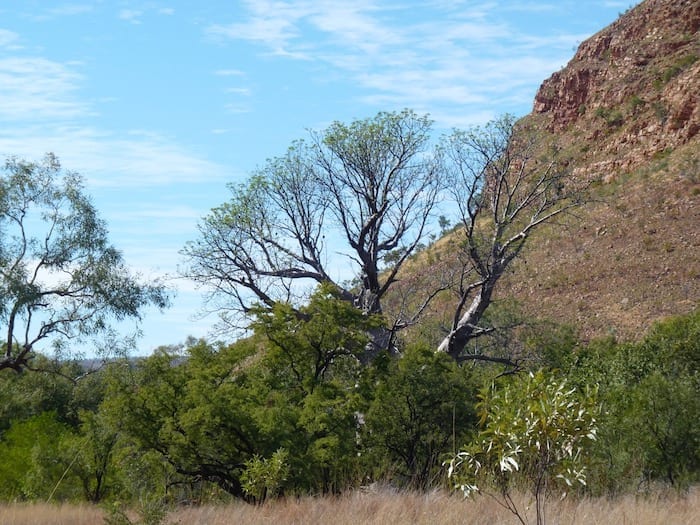
You’re in the midst of ancient rocky ranges and vast open savannah plains. Wunaamin-Miliwundi (formerly King Leopold) Range is showing its age, hardly surprising since it’s around 2 billion years old. It looks old, tired, and infinitely wise.
And there’s an unexpected surprise amongst the semi-arid mountains.
Small pockets of tropical rainforest thrive in protected gullies amongst the ranges. About 50 million years ago, this land was covered with tropical rainforest. So it’s quite a shock to see majestic Livistonia palms happily growing in such an arid environment – a direct link back to the age of dinosaurs.
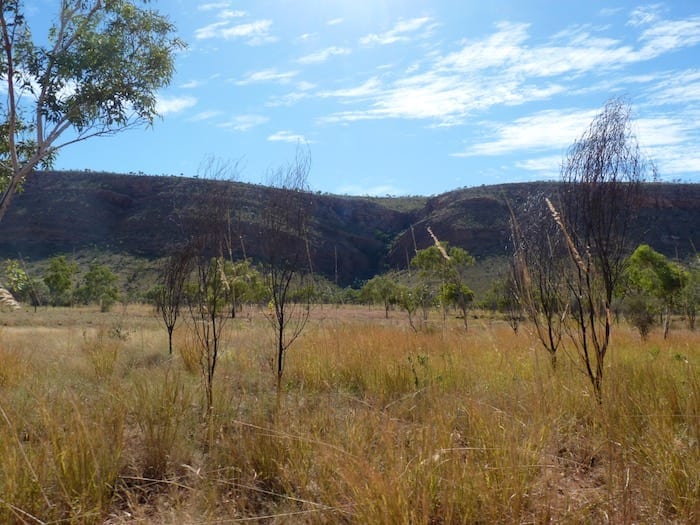
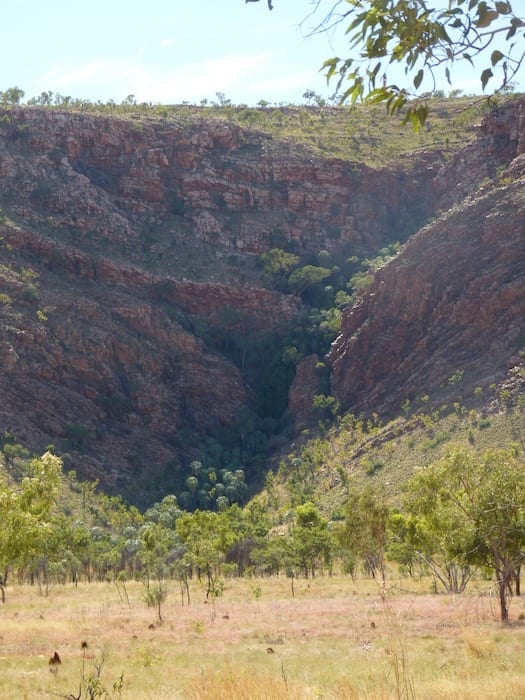
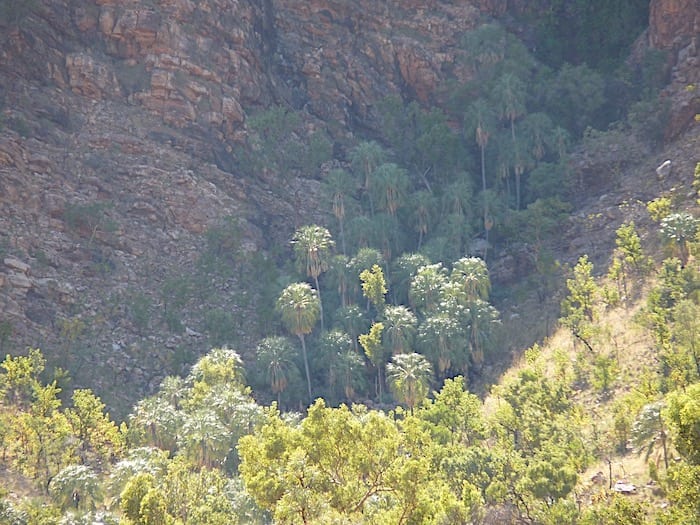
You get an appreciation for this landscape by taking a rocky track from Mornington Wilderness Camp to Dimond Gorge and the Fitzroy River. It vaguely follows the base of Wunaamin-Miliwundi Range and the views are at times simply stunning.
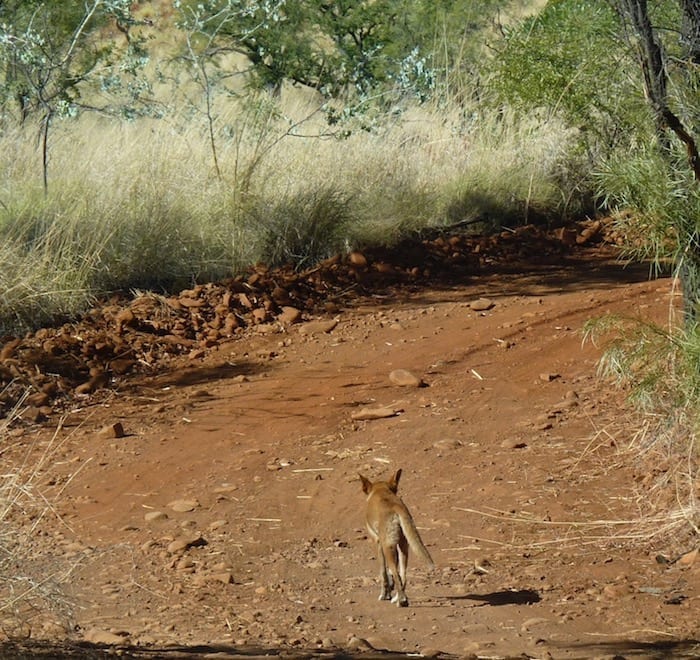
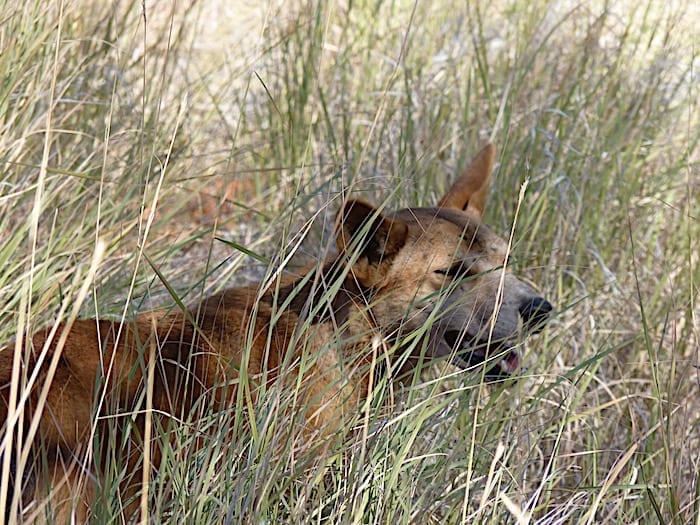
Jijidu (Dimond Gorge)
The Fitzroy River flows through Mornington Wildlife Sanctuary. Over many millions of years the Fitzroy has formed Jijidu, or Dimond Gorge. In the 1950s a crazy plan was hatched to dam Dimond Gorge. It was to supply Perth with water, which would be about 2,500km away!
Then in 1990 there was another proposal to dam Dimond Gorge – this time to provide irrigation for proposed cotton farms to the south. Thankfully neither came to fruition, as most of Mornington would have been under water.
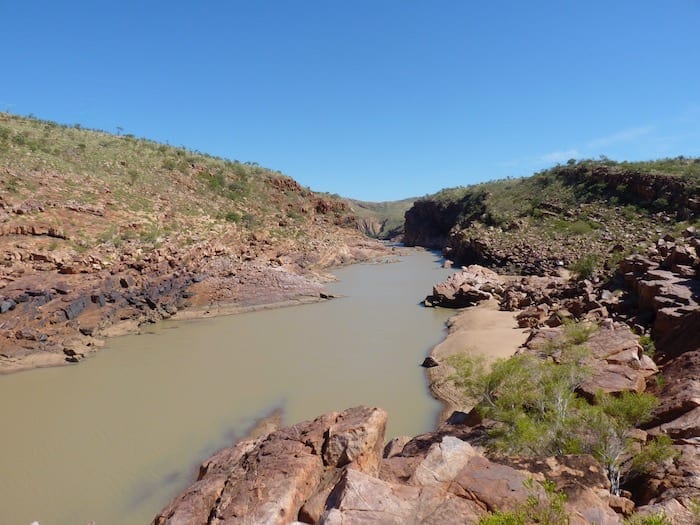
You can hire canoes at Dimond Gorge or take your own. If you hire, pay your money and grab a paddle before you leave the campground. The canoes are permanently tied up at the gorge. Unfortunately, the day we visited it was just too hot to be cooked alive on the open water. We’ll certainly be doing this in the future though.
Take a moment to imagine the 2002 and 2023 wet season floods. In 2002, the Fitzroy peaked at 52 metres and spilled over the top of the gorge! In 2023 it was even higher. That’s a huge quantity of water – hard to imagine.
Dimond Gorge is one of those places where you find a shady tree and just chill out as you take in the beauty of the place.
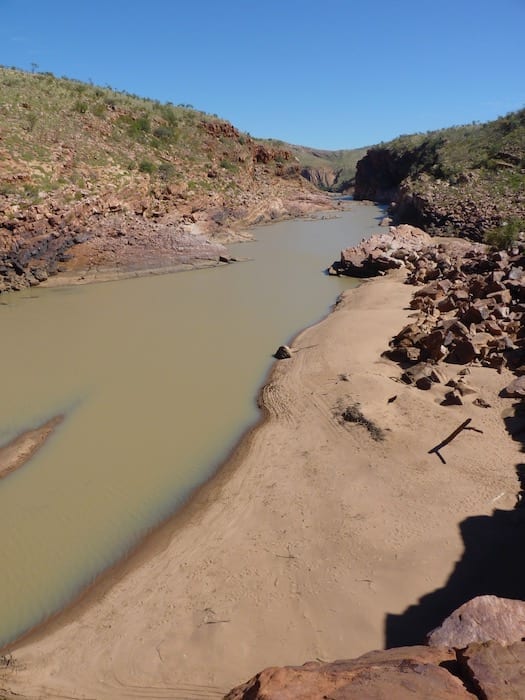
Skimming Stones and Swimming With Freshwater Crocs
Blue Bush is good spot to swim in the Fitzroy River. Another spot is Cadjebut. We had a swim, some lunch, skimmed some stones then had another swim. A good place to chill out. Yes, there are freshwater crocodiles in the river, but they won’t worry you.
To be honest, we were a little disappointed with the Fitzroy. Given we were there in May, we all expected to see more water in the river. I suppose it has a lot to do with the sandy soil – the water just doesn’t stay on the surface. Must be amazing to see in the Wet though.
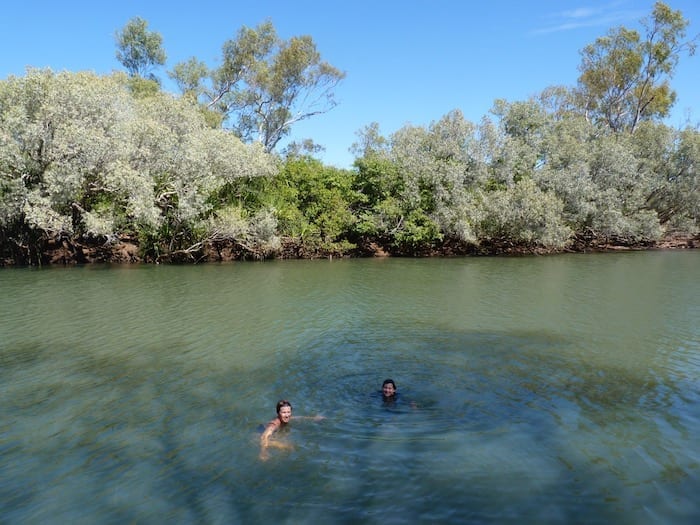
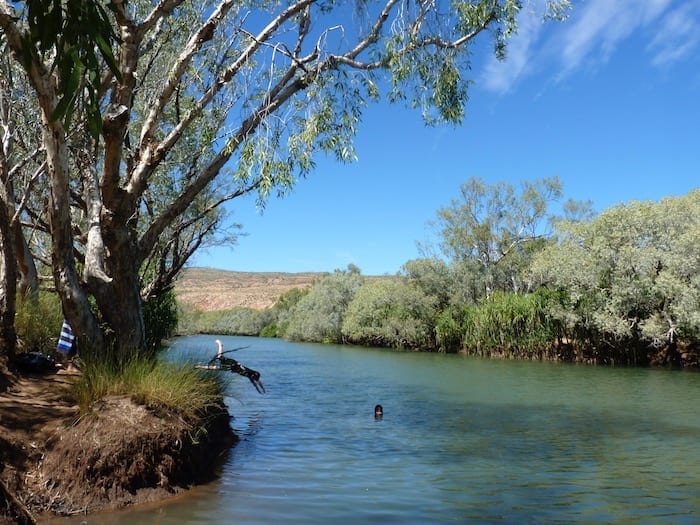


We didn’t have time to visit Sir John Gorge, which is further to the east. By all accounts it’s a must-see destination. We’ll have to go there next time!
Next time: Galvan’s Gorge, a top spot for a swim!
Mornington Wildlife Sanctuary is on Worla and Punuba Country.
Looking for more information on the Gibb River Road? Then go here.
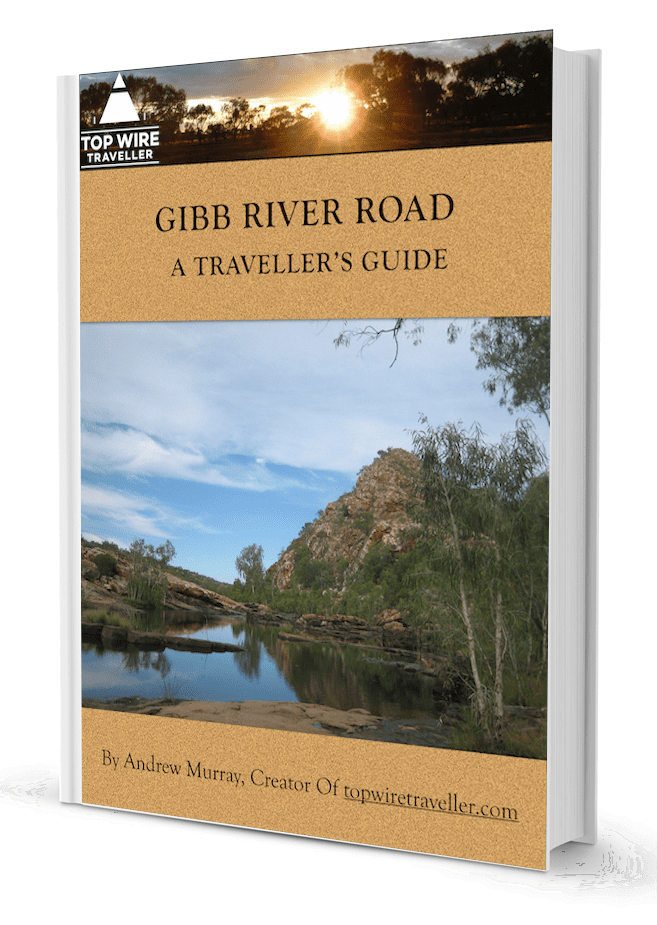
Plan your Gibb River Road Adventure
Download “Gibb River Road – A Traveller’s Guide” for info on what to see, road conditions, fuel and much more.
…at our FREE RESOURCES Page!
Any questions or comments? Go to the Comments below or join us on Pinterest, Facebook or YouTube.
Any errors or omissions are mine alone.
